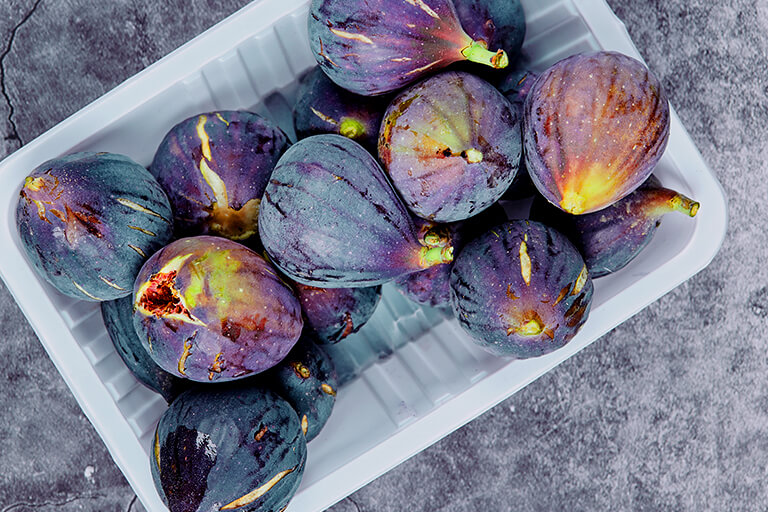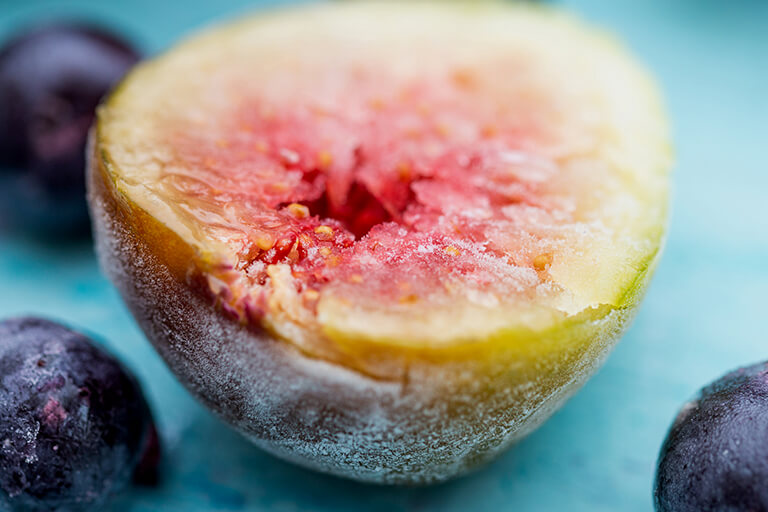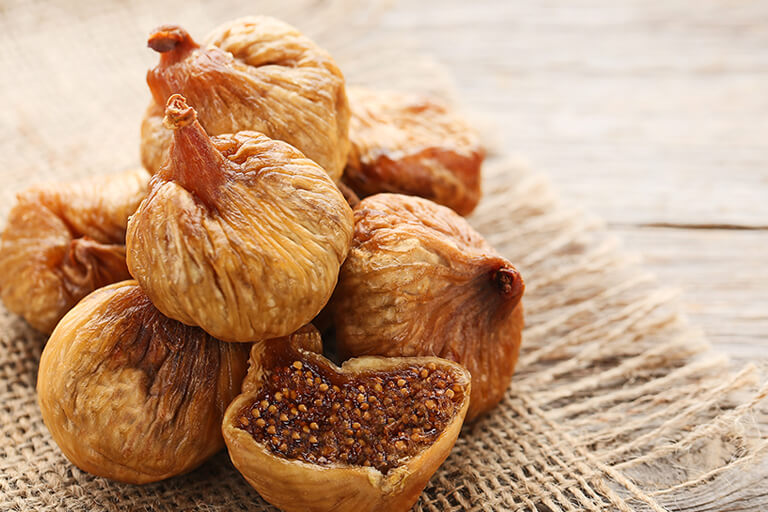Figs are a unique fruit resembling a teardrop. They’re about the size of your thumb, filled with hundreds of tiny seeds, and have an edible purple or green peel. The flesh of the fruit is pink and has a mild, sweet taste. The scientific name for the fig is Ficus carica.
Know Your Food: Fig
Figs — and their leaves — are packed with nutrients and offer a variety of potential wellness benefits. For example, they are said to promote strong digestion, decrease the risk of heart disease, and help balance blood sugar levels.
Along with the fruit, fig leaves and fig leaf tea are also said to have health benefits. Dried figs, in particular, may help relieve constipation. However, figs may interfere with blood-thinning medications due to their vitamin K content, and dried figs should be eaten in moderation due to their high sugar content. That said, fresh figs, fig leaves, and fig leaf tea make great additions to a healthy diet.

How to Select Fresh Figs
The shelf life of fresh figs is brief. They must be picked ripe from the trees as they do not ripen well once picked. A very firm fig is not ripe and will not properly ripen further. The prime harvesting season for fresh figs is mid-June to mid-October. If you see them in a market, buy them only if you plan to eat or use them soon. Fresh figs will spoil within seven to ten days of harvesting. In most cases, this means you have about three days at most to use them at home.

Storing Fresh Figs
It’s important to keep fresh figs cold to slow deterioration. Use them immediately or store them in a plastic bag in the coldest part of your refrigerator for up to two days. Fresh figs can be frozen whole, sliced, or peeled in a sealed container for ten to twelve months. Just defrost before using and take extra care when handling these super delicate fruits. If you want a delicious and refreshing way to use aging figs, try our Halva Smoothie recipe.

Can You Grow Figs?
Probably the most wonderful way to get fresh figs is to grow them. While they like mild climates, you can get fruit from a fig plant grown at home.

Canned or Dried Figs
Since fresh figs are so delicate, canned or dried figs are popular alternatives. They are easy to find in most supermarkets and are relatively inexpensive. Canned figs will be good for a year in your pantry. Opened canned fig leftovers can be stored in a covered container in the refrigerator for up to a week. Dried figs can be stored in the original sealed package at room temperature for a month. Then, keep them in the refrigerator for more extended storage where they can be stored for six months to a year. Opened dried figs should be transferred to a sealable plastic bag and stored in the refrigerator. If you are looking for a way to use them up, try our Dried Figs and Nut Bars recipe.

